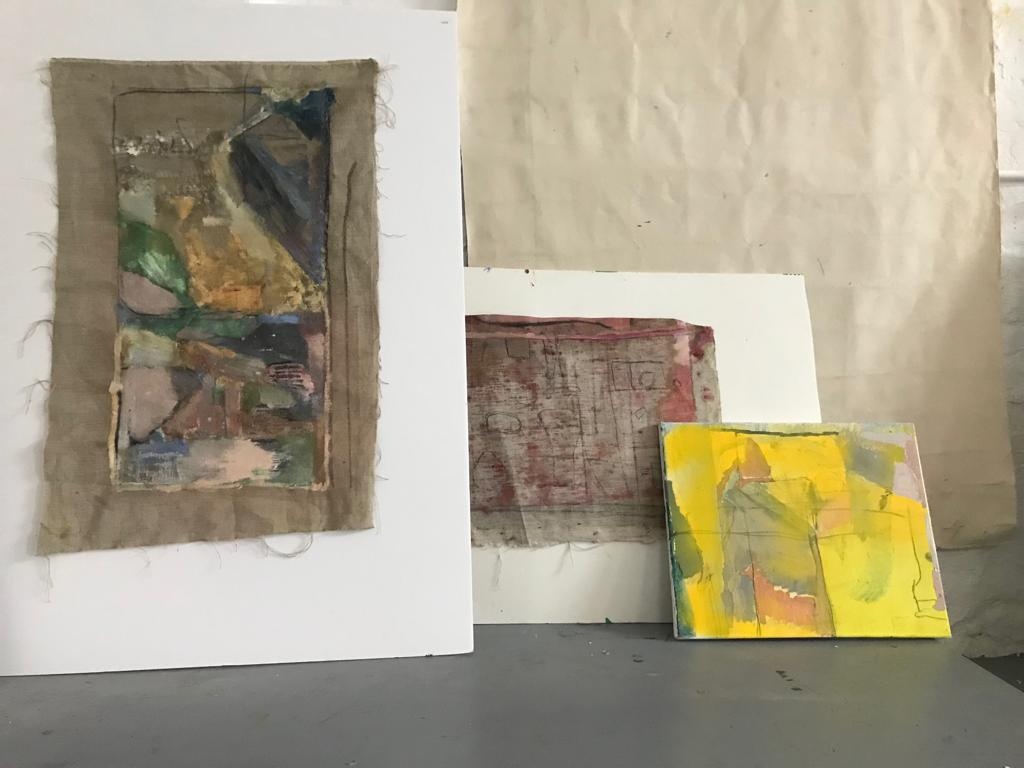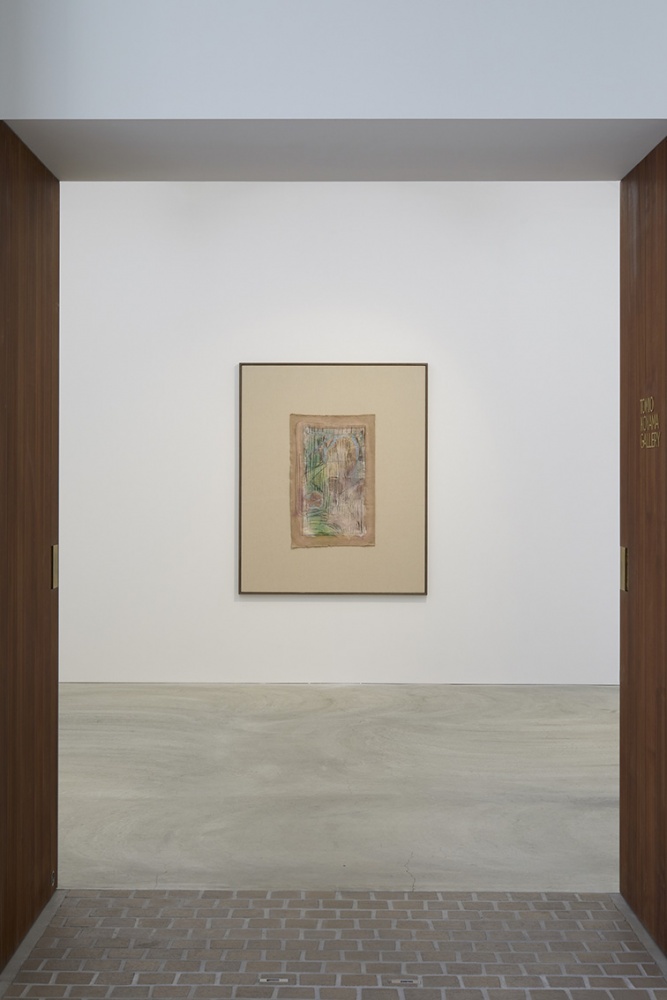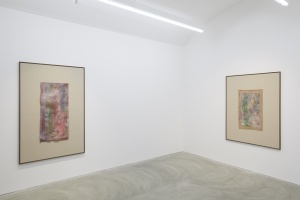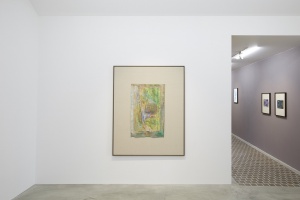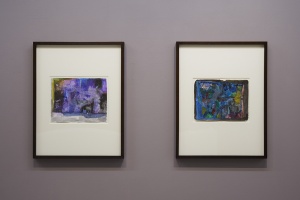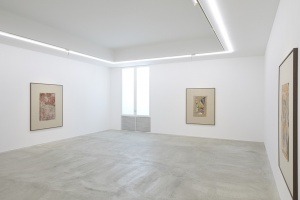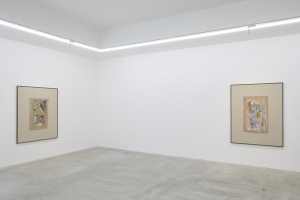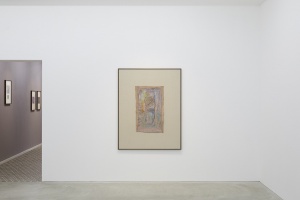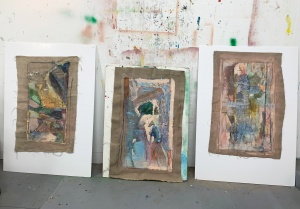Tomio Koyama Gallery is pleased to present an exhibition of works by Varda Caivano Marking the artist’s fourth solo presentation with the gallery since her most recent showing three years ago for Tomio Koyama Gallery in 2016 .This new exhibition, her second at the gallery’s Roppongi gallery space, features nine major new paintings and a selection of framed works on paper that are both drawn, painted and collaged on paper.
【About Varda Caivano】
Varda Caivano, born Buenos Aires (1971), graduated from her masters at the Royal College of Art (London) in 2004, having previously been educated to degree level in sciences (Biology), and humanities (Art History), the latter taken at the University of Buenos Aires in Argentina. On moving to the United Kingdom in the early 2000s to complete a graduate diploma at Goldsmiths University in Fine Art, she followed this with her RCA MA, where Caivano is now Faculty Lecturer in painting, alongside her commitment as artist ‘supervisor’ of the independent studio programme at De Ateliers in Amsterdam, Holland.
Residencies undertaken recently include a recent research period, courtesy of CCA Andratx, Mallorca, in Spain, a space and time which has informed key aspects of her material and investigative thinking for this exhibition at Tomio Koyama Gallery in Tokyo.
International solo exhibitions of note include ‘The DENSITY of the ACTIONS’ curated by Solveig Øvstebø at The Renaissance Society, University of Chicago i(2015), significant international Biennales include curator Massilliano Gioni’s, `The Encyclopedic Palace` at the 55th Venice Biennale in Italy (2013), and participation in the Gwangju Biennale in Korea in 2012.
In Japan her works have been placed in many notable public and private collections to date, including the public collection of the National Museum of Art in Osaka. Her work is exhibited in “Globe as a Palette ; Contemporary Art from The Taguchi Art Collection” at the Hakodate Museum of Art, Hokkaido, Japan (which toured to Sapporo Art Museum, in Hokkaido, Japan)
In his response to the second of three solo exhibitions at her London based gallery, Victoria Miro, who has worked with Caivano since 2005, US art historian and critic Barry Schwabsky wrote,
“with the exhibition ‘Voice’, Caivano has moved from being one of London’s most promising younger painters to having established herself as one of the best painters of any age, anywhere.”
(Barry Schwabsky, Artforum, May 2011, p.297)
【About Caivano’s Works: The Production Process and Time Itself】
Varda Caivano’s paintings consist of multiple layers of diverse colors, lines, and brushstrokes, in a manner intentionally kept unfinished – suggested by its unpainted areas – which creates a richness that arouses the viewer’s imagination while also conveying a potentially unlimited sense of space.
The colors she uses have shifted from the brighter ones employed in her earlier work, to a more subdued predominantly grey, blue, and brown tonality as reflected in her `Grey Paintings` series presented in her previous solo exhibition in Japan in 2016. In these latest works, Caivano once again returns to a vivid palette of reds, yellows, and greens.
The pencil lines embedded within the paintings, as well as the fixed charcoal overdrawing are also a unique characteristic of her work. Such lines function in creating further frames within the contours of the canvas, giving the impression of several works being present in the details of a single painting.
Continuing to engage in various observation, contemplation, discovery, decision-making, experimentation and planning, Caivano uses colors, lines, materials, brushstrokes, and unpainted areas in her work to convey both depth and density. As a result, the traces of her thinking come to overlap with the voices and dialogues of the works, and it is after this relationship has developed over a certain period of time, that the works meet their completion. The multiple layers of colors, lines, and brushstrokes in the works seem to represent the passage of time incurred.
Although this process is at the core of Caivano’s artistic practice, her works also form connections with her past oeuvre, as well as pieces she is simultaneously working on. While at once being aware of the surface effects on the picture plane, her paintings attempt to establish contact points between time and space. They embrace both materiality and illusion, and indeed could be regarded as earnestly pursuing the possibilities as well as the limitations of abstract painting.
【Commonality with the Passage of Time in Music and Theater: Viewers and the Exhibition Space】
A commonality with the passage of time in music and theater is also often observed in Caivano’s work.
Art critic Minoru Shimizu describes Caivano’s work as follows,
“Caivano’s collages are more fluid and musical. Aside from the faint accents of instrumental sounds, they are like musical scores that permeate with a domineering air of silence (or ambience).”
(Minoru Shimizu, “The End of the Transition Period: ‘Varda Caivano’ Exhibition,” Bijutsu Techo, 2017 March Issue)
The artist herself stated as follows regarding the relationship between her works and the viewer
“The space of the painting that extends before viewers is not something that has been determined (by the painter), but is that which unravels within the eyes of those who view it. This is the reason why I from time to time have referred to my paintings as ‘transition spaces’ or ‘inner spaces.’ In other words, I don’t regard painting as a representation, but instead something more like a presentation in the context of poetry and music.”
(Varda Caivano Interview: “Limitless Paintings that Stir the Imagination,” interviewer: Kotaro Shimada, Bijutsu Techo, 2017 February Issue
In a newly released selection of essays by writer and former director of De Atelier an interesting set of comparative links between artists in the field of painting as varied in the European and International scene as Jana Euler, Kerstin Bratch, and Charlene von Heyl, (many of whom visited or exhibited in Holland at the time of writing). Caivano is quoted from a lecture given to ‘participants’ at the school, as follows:
“For many centuries, painting has portrayed history, politics, economics-everything. Painting has all that inside. Painting now means something different than centuries ago, but as a painter you do have a responsibility. It is necessary to talk about paintings as a conceptual practice.”
(Dominic van den Boogerd, “Great Temptations”)
The works that have been completed in her studio transform into something different at the moment of their production. Furthermore in the exhibition space, the works and the walls, lighting and other factors of the setting come to mutually interact, enabling the artist herself and viewers to discover new aspects embedded within the works.
The ways in which Caivano’s works are viewed and perceived are freely entrusted upon the viewer. We invite viewers to take this opportunity to observe how Caivano’s oeuvre has transformed over the past three years since her previous solo exhibition at Tomio Koyama Gallery, and how it unfold on this occasion within the Roppongi space.
—————————————————————————————–
For press inquiries, please contact:
press@tomiokoyamagallery.com (Makiko Okado)
—————————————————————————————–

